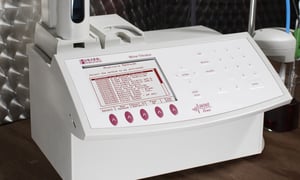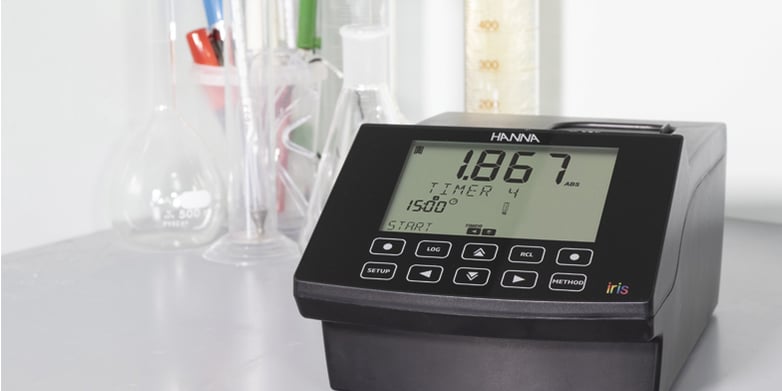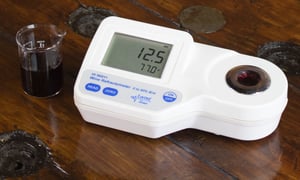Stuck fermentations were the bane of the wine industry for years. They would tie up tank resources, increase the risks of unwanted spoilage, and just be an all-around headache for winemakers during harvest. The problem was significant enough that there were studies at UC Davis, dedicated to investigating causes and potential solutions to the problem under a large research grant.
While a great deal of knowledge was gathered and disseminated through that research grant, and stuck fermentations have become less of an issue, they do still occur, and the knowledge of managing fermentation protocols against the problem still needs to be readily shared with the industry so winemakers can better manage the day-to-day realities of their fermentations and prevent the hated stuck condition.
Yeast Nutrition in Wine Fermentation
One of the major portions of the study into stuck fermentations dealt with yeast nutritional needs. Like any other living organism, yeast have nutritional requirements for a healthy lifespan and the performance of regular metabolic activities while turning your prized Cabernet Sauvignon grapes into premium wine. The most basic of those parameters is the optimum amount of nitrogen containing compounds that yeast can assimilate and metabolize for healthy membranes, well developed cellular structures, and all the defense mechanisms needed to handle the competitive microbiological landscape.
One of the outcomes from this work is that a number of yeast and cellar sundry manufacturers now provide a range of yeast nutrient supplements to meet the full range of nutritional requirements yeast have for the fermentation process. These can be anything from simple diammonium phosphate salts (DAP), to proprietary mixtures of complex amino acids, fatty acids, and micronutrients.
Understanding how this impacts you as a winemaker is the larger question to answer. From a lab perspective, this brings into play the knowledge of nutritional needs for specific yeast strains, as some will be more demanding than others; plus, the ability to measure the nutritional profile of your juice in some fashion now becomes a key requirement in your lab protocols.
YAN in Your Wine Juice
The main measurement of concern for yeast nutritional needs in winemaking is what’s called YAN, or Yeast Assimilable Nitrogen. This is actually a combination of two separate measurements – the ammonia available in grape juice, as well as the complex of alpha-amino acid compounds referred to as FAN (Free Amino Nitrogen) that yeast will absorb and process for their nutritional needs. The two measured separately and combined provide the overall nutrient profile, or YAN, of your grape juice.
First, let’s set a baseline for what we’re talking about in lab analysis. The units we’re discussing are going to land in the ppm level, or mg/L concentration. Textbook YAN requirements for saccharomyces wine yeast generally begin at around 140-150 mg/L (Henscke). Juice from wine grapes has a fairly wide reported range from the low double-digit 30-40 mg/L, up to fairly sizeable measurements of over 1,000 mg/L. YAN values in juice though can commonly tend towards what is considered by the research data as slightly nutritionally deficient, around the 100-150 mg/L range. (cite Vintessential Labs and Butzke study AJEV 1998)
Supplementing YAN in Your Wine Juice
The goal of monitoring YAN in the wine lab is to check for nutritional sufficiency in your base juice, then to optimize your supplementation protocols to provide the ideal amounts for the yeast. Too little YAN in your juice, and you risk stuck fermentation from nutrient starvation. Excess YAN however can also cause issues in the cellar; primarily the production of negative aroma compounds, or the possibility of unwanted and opportunistic spoilage microbes having their nutritional needs enhanced as well.
Most yeast manufacturers will give the nutritional demands for each strain they offer as a commercial product. Recommendations will commonly be given as a range of low, medium, or high YAN demanding yeast with a subsequent recommended range for each strain. An example from a leading commercial supplier of yeast can be seen here.
In addition to the basic demands of different strains, there is also a component of how stressful your juice is to the yeast. Higher Brix levels result in higher end alcohol levels, plus are a greater osmotic stress to the yeast before fermentation begins. Both stress conditions require greater nutritional supplementation in yeast prior to fermentation to ensure healthy inoculations and a smooth fermentation.
Measuring YAN in Your Wine Juice
There are two common methods for most wine laboratories to measure their YAN values in juice: spectrophotometer and formol titration.

YAN by spectrophotometer is typically the more common method of the two as it produces less chemical waste, and once the initial hardware purchases are made, costs are generally low with the only major consumable being the enzyme testing kits. Ammonia and FAN are analyzed separately and the combined results of the two produce an overall YAN value. A spectrophotometer capable of reading absorbance at 340 nm is the main investment for equipment. Additional initial costs are required in micropipettes, pipette tips, and sample cuvettes, in which the costs for pipettes can be significant to the overall costs for testing. Spectrophotometric testing can have some variability as precision with very small sample volume delivery is necessary.
The titration method for YAN is a two-step process that involves a simple acid/base titration to reach an initial endpoint for the wine sample.
 That sample is then treated with a formaldehyde reagent which interacts with the ammonia and amino acids in solution to form an acidic product that reduces the pH.
That sample is then treated with a formaldehyde reagent which interacts with the ammonia and amino acids in solution to form an acidic product that reduces the pH.
A second acid/base titration is then performed giving the resulting mg/L equivalents according to known reagent concentrations. Initial investments are in the titration equipment, with repeat costs in reagent consumables and in disposal of the formaldehyde reagent which requires handling as a toxic chemical. Manual titration has increased variability, which can be minimized by use of autotitration systems.
YAN Solutions from Hanna
Hanna Instruments offers testing equipment options that ideally meet your YAN analysis needs. If a spectrophotometer is your preferred method, we’ve in recent years released our iris model vis-spectrophotometer, which has been validated to AOAC standards using leading wine industry enzyme kits for both ammonia and NOPA methods for FAN to give accurate combined YAN values.
The formol titration protocols are also a part of our dedicated wine titrator, the HI901W.

The Hanna HI901W Wine Titrator
For more information, or to request a quote, please contact Hanna Instruments at 401-765-7500 or sales@hannainst.com.
Contact us!
If you have questions regarding your wine testing for YAN , please contact us using one of the channels below.
As a leader in innovation Hanna Instruments developed the HALO Wireless pH Meter, which uses Bluetooth Smart Technology to connect to Apple and Android devices running the Hanna Lab App.
Continuing with this tradition, the Hanna Instruments Blog is devoted to sharing the latest in product overviews, how-to guides, and industry specific news to our ever-growing audience.
Contact us at sales@hannainst.com.



